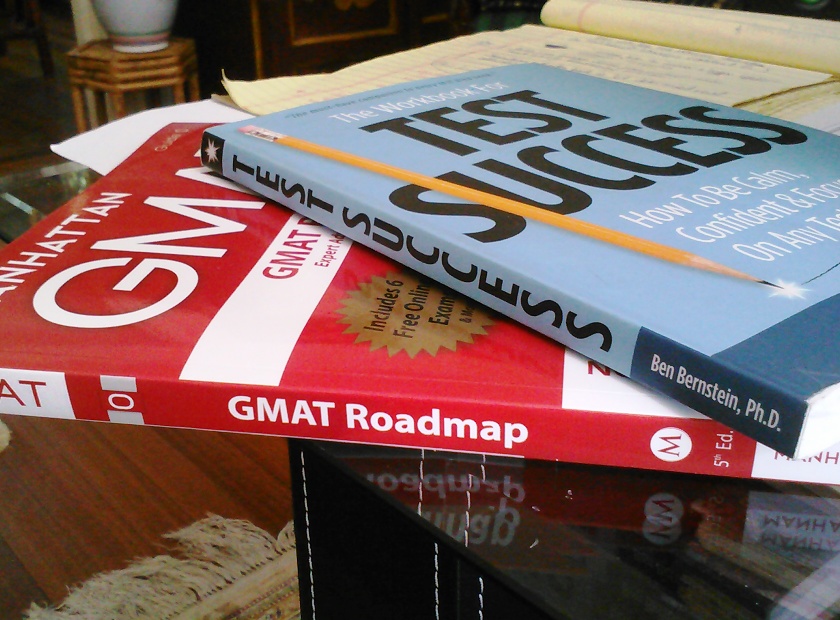GMAT, GRE, LSAT and Your Brain
Starting to think about taking the GMAT, GRE or LSAT? This is actually the time to start looking into courses, figuring out whether you want to take a class or get a private tutor, or whether doing the online/whiteboard route works for you. You can find variations that suit your timeframe, learning style, and temperament.
Test Anxiety is Normal
Taking tests is a subject that is near and dear to my heart. I want you all to know that I was a TERRIBLE test taker. My SAT scores were so low that I was laughed out my top choice undergraduate schools. (I eventually had to transfer into Vassar from a state school). So when I was thinking about applying to graduate school, the hold-it-all back side of my brain flipped out. Eventually, I ended up teaching that emotional bundle of neurons to shut up and let me be the test taker I thought I ought to be. And it worked: I scored in the 93rd percentile, with roughly equal math and verbal scores. Oh, and I got into HBS, Stanford Business School, Chicago, Wharton, and Darden. Cool, huh?
I’ve been thinking about this experience because I’ve been reading an old classic of leadership training, Emotional Intelligence, by Daniel Goleman. He describes a situation a lot of us know only too well: test anxiety. He describes, in scientific detail, an emotional hijacking. This is where the limbic system, (the part of the brain that tells the body to breathe, pump blood, and run away from predators) disrupts the “working memory.” So if you’ve ever been in a situation where you sit down at a computer screen in a noisy and unpleasant test center, here’s what’s probably going on.
The prefrontal cortex is the brain region responsible for working memory. But circuits from the limbic [most primitive brain part] brain to the prefrontal lobes [the rational/working memory part] mean that signals of strong emotion – anxiety, anger, and the like—can create neural static, sabotaging the ability of the prefrontal lobe to maintain working memory.
This limbic system is the hotbed of emotions. The limbic system, which includes the amygdala, if you’ve ever heard of it, is screaming to you as you look at the test questions, “Run away, it’s too scary! You will fail!”
Well, guess what. That amygdala is useful sometimes, but it tends to overreact. And that’s where the thinking, reasoning brain comes in. The prefrontal cortex tells the panic-stricken limbic system that all is not out of control.
The problem is that the cortex sometimes takes awhile to figure out that it needs calm your hysterical primitive, running from-the-burning-house brain. You are sitting in a noisy and fear-inducing test taking center. You know you should be spending no more than two minutes per question. And you are not even conscious of all this stuff going on inside your grey matter!
You Can Get Over It
The task is to teach yourself how to speed up the “thinking brain’s” work and quell those fears. It takes lots and lots of practice, and it can be done.
I’ve got lots of suggestions, and most of them can be found in a previous article I wrote called “Train Your Brain for Test Success: Mastering Test Anxiety.” But if you want to cut to the psychological chase, pick up a copy of Dr. Ben Bernstein’s Workbook for Test Success. He’s an experienced psychologist who knows how to put that amygdala back in line.
If I figured out how to do it, anyone can. I personally know a few standardized testing (GMAT and GRE) tutors whom I like, and rather than shout out here, I am happy to take your calls and make recommendations. Take a breath and good luck!




